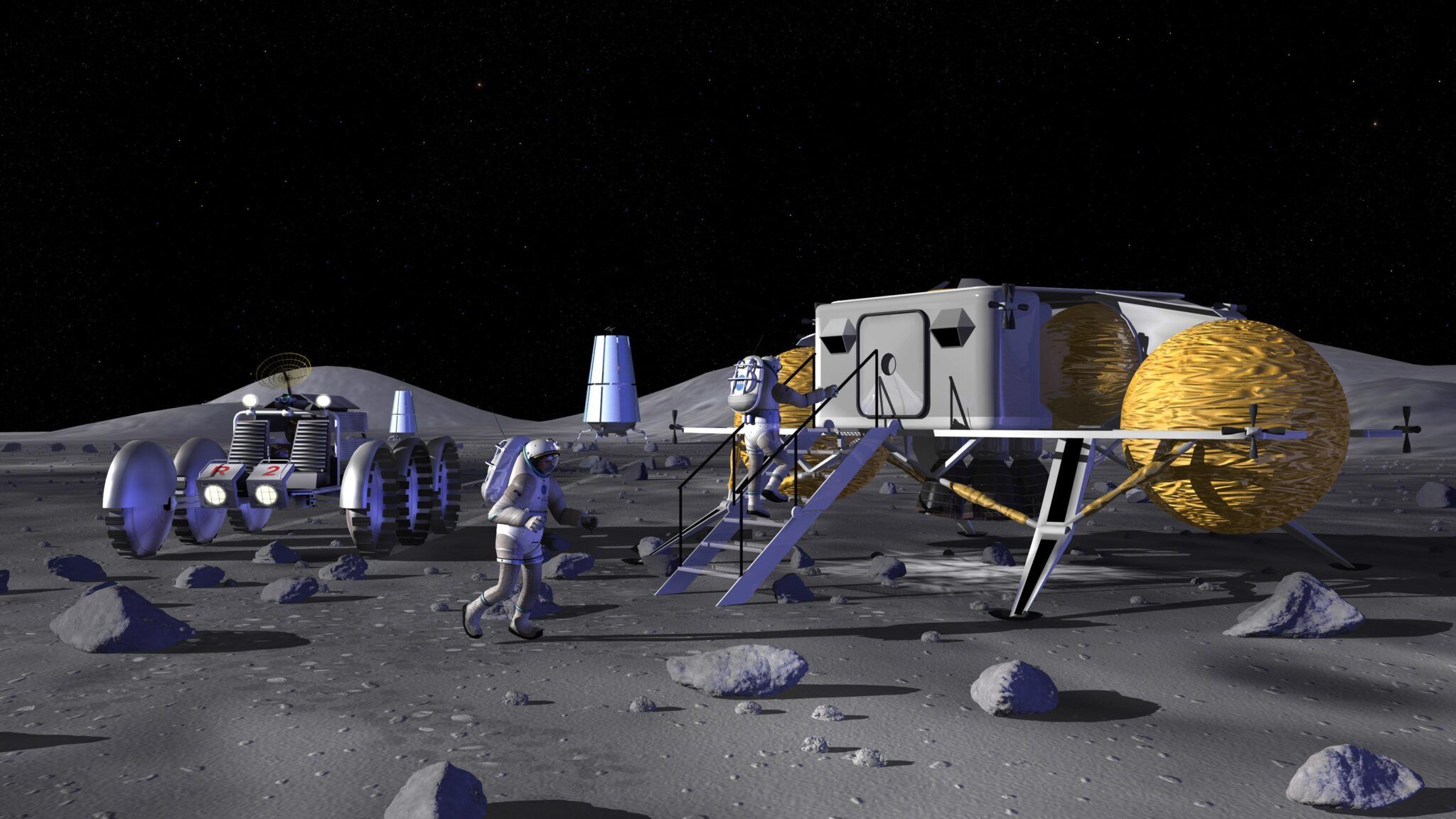Russia and China Ready to Sign Deal to Build First Moon Base, Snubbing US
Article by Olivia Burke February 18, 2021 (thesun.co.uk)
• On February 11th, the Russian Federation announced plans to sign a Memorandum of Understanding with China to collaborate on a series of International Lunar Research Stations (ILRS) or ‘Moon bases’, as proposed by the Chinese. Both countries will carry out preparatory research throughout the 2020s with the aim of establishing Moon bases at the Moon’s south pole in the early 2030s. The bases will initially be populated by robots and will provide a long-term presence on the Moon for short crewed missions in the early 2030s, and a longer-term sustained human presence anticipated to begin between 2036-2045. The U.S. has not been asked to participate.
• The Chinese and Russians plan to use the lunar base to aid the “construction and operation of human’s first sharing platform in the lunar south pole, supporting long-term, large-scale scientific exploration, technical experiments and development and utilization of lunar resources.” The robotic base will potentially incorporate the expertise of other nations as well, who will contribute their own spacecrafts.
• Pand Zhihao, a former researcher at the China Academy of Space Technology, praised, “Russia’s expertises, including liquid oxygen kerosene engine technology as well as a complete, world-beating system for astronaut training, will all no doubt accelerate the program’s advancement.” Russia’s state corporation for space activities, Roscosmos, said the official announcement set to coincide with the Global Space Exploration Conference in 2021, held in St. Petersburg.
• Humans have not set foot on the Moon since the NASA’s Apollo 17 mission in December 1972. The Americans have been planning to resume settlement of the Moon under the Artemis Accords, pledging to send astronauts back there by 2024. The Russians, however, do not favor the Artemis Accords because it proposes a global legal framework for mining on the Moon, which the Russians liken to colonialism. Roscosmos’ deputy general director for international cooperation, Sergey Saveliev, remarked, “There have already been examples in history when one country decided to start seizing territories in its (own) interest — everyone remembers what came of it.”
• It is also believed that Russia was reluctant to back the Artemis Accords plan due to the Lunar Gateway element – a small orbiting space station and communication hub similar to the ISS. U.S. legislation implemented in 2011 prohibits China from participating with the International Space Station partnership. And it is thought that the Trump Administration further isolated the U.S. from its international allies by unilaterally creating the Space Force.
• NASA’s Artemis Accords have the cooperation and support of Australia, Canada, England, Japan, Luxembourg, Italy, and the UAE. “The Artemis Accords have driven China and Russia toward increased cooperation in space out of fear and necessity,” said former Congressional legislative director Elya Taichman.
• China made history in 2019 by becoming the first country to land on the dark side of the Moon. The European Space Agency is said to be closely monitoring the ILRS program in anticipation of joining. It is feared that a China-Russia-European consortium could knock NASA off the top spot as the international leader of space exploration.
 RUSSIA and China are joining forces as they prepare to sign a historic deal to build the first moon base after they snubbed the US.
RUSSIA and China are joining forces as they prepare to sign a historic deal to build the first moon base after they snubbed the US.

The two countries are to collaborate on the international lunar structure, which was thought up by China – the latest build in the space-race against America.
The purpose of the International Lunar Research Stations (ILRS), is to create a long-term robotic presence on the Moon by the start of the next decade, before eventually establishing a sustained human presence.

An Order of the Government of the Russian Federation detailing the scheme was published on February 11, but the “date to sign the above mentioned MoU has not been determined yet and is currently discussed with the Chinese partners.”
Humans have not set foot on the moon since December 1972, when Harrison Schmitt and Eugene Cernan made tracks on it during an

Apollo 17 mission.
Both countries will carry out the research, beginning with China’s upcoming Chang’e-6, -7, and -8 missions and Russia’s Luna 27 probe.
They plan to use the lunar base to aid the “construction and operation of human’s first sharing platform in the lunar south pole, supporting long-term, large-scale scientific exploration, technical experiments and development and utilisation of lunar resources.”
China and Russia plan that in the early 2030s, the ILRS development will theoretically provide a base for long-term robotic presence on the Moon with the potential for short crewed missions.
FAIR USE NOTICE: This page contains copyrighted material the use of which has not been specifically authorized by the copyright owner. ExoNews.org distributes this material for the purpose of news reporting, educational research, comment and criticism, constituting Fair Use under 17 U.S.C § 107. Please contact the Editor at ExoNews with any copyright issue.
